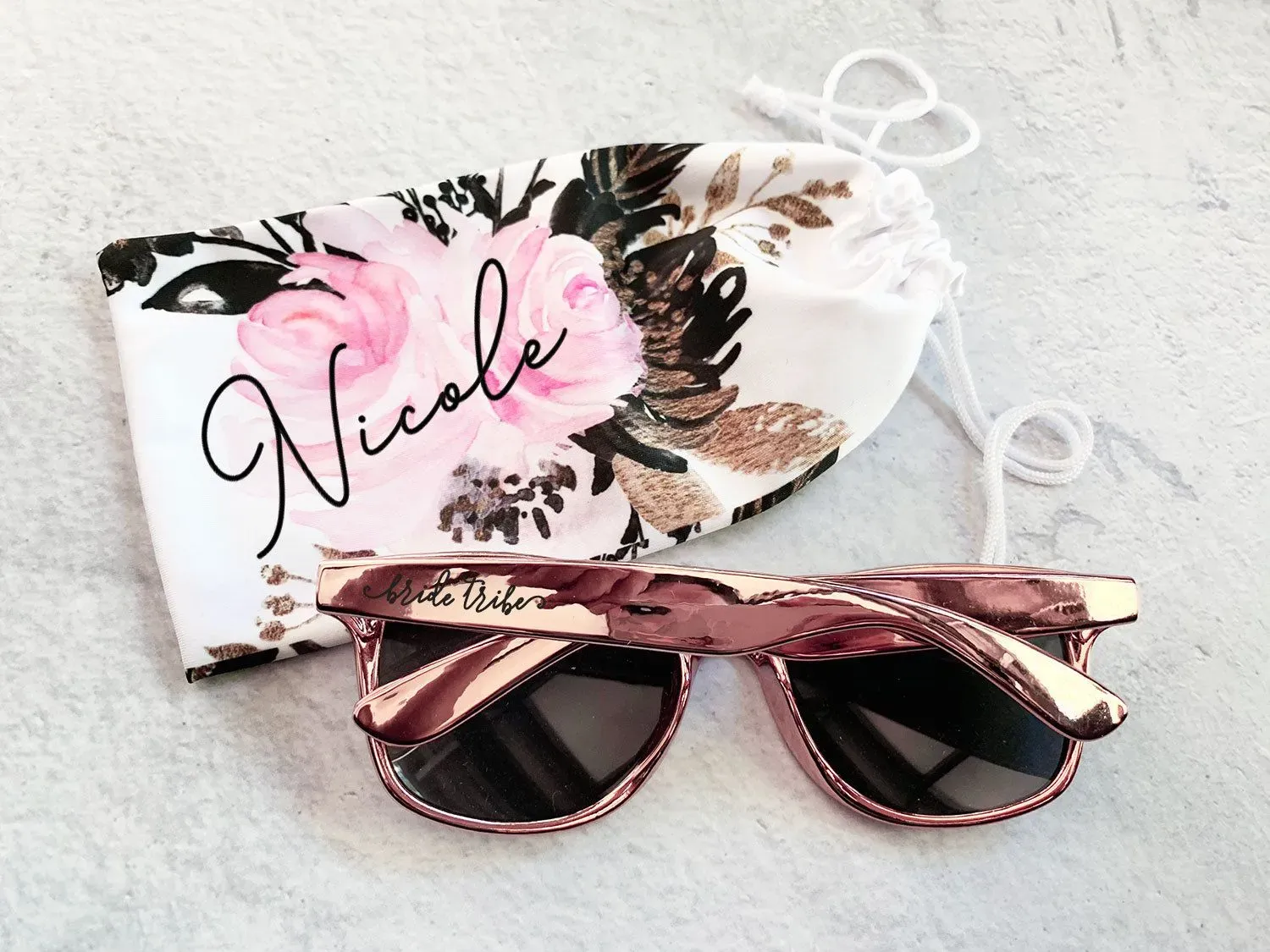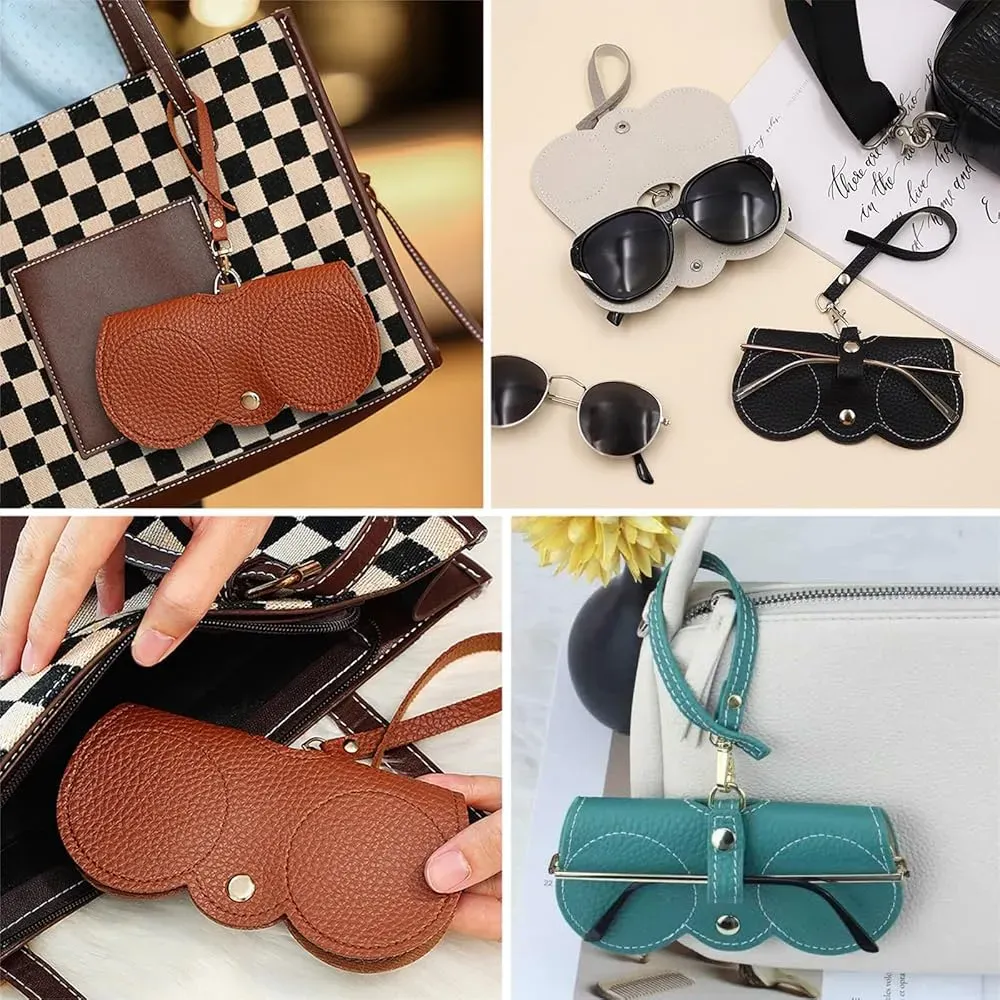Table of Contents
Ever reached for your favorite pair of sunglasses, only to pull them out and find a nasty scratch right across the lens? It's frustrating, isn't it? Those perfect shades, now marred by a careless toss into a bag or pocket. You spent good money on those lenses, maybe they even correct your vision, and seeing them damaged feels like a punch to the wallet. This is where the humble, yet crucial, **sunglass bag** steps in. Often overlooked, this simple accessory is the unsung hero in the fight against scuffs, dings, and dirt that can ruin your expensive eyewear.
Why a Sunglass Bag is Essential Gear
Why a Sunglass Bag is Essential Gear
Protecting Your Investment from Daily Grime
Let's be honest. You didn't buy those sunglasses to keep them tucked away in a drawer. They're meant for the real world – the beach, the car dashboard, the bottom of your backpack, maybe even just sliding off your head onto a cafe table. Every single one of those places is a hazard zone for lenses. Dust, keys, loose change, sticky residues – they're all waiting to leave their mark. A proper sunglass bag isn't just a fancy pouch; it's a necessary barrier against the constant assault of daily life. It keeps the grit off, prevents those micro-scratches that slowly turn your crystal-clear view into a hazy mess, and generally preserves the life and clarity of your lenses.
Avoiding Costly Damage and Frustration
Think about the last time you saw a pair of sunglasses with a deep gouge or a spiderweb crack. It happens, usually when they're dropped or crushed without protection. Repairing or replacing lenses, especially prescription or polarized ones, isn't cheap. Sometimes it costs more than the original frames were worth. Using a dedicated sunglass bag is a simple, low-cost action that drastically reduces the risk of that kind of catastrophic damage. It provides that crucial layer of padding and containment, keeping your expensive eyewear secure whether you're on the go or just setting them down for a moment. It's a small habit that saves you big headaches and even bigger bills down the line.
Here's a quick look at what your sunglasses face without a bag:
- Keys and coins scratching lenses in pockets or bags.
- Dust and dirt accumulating on surfaces, leading to abrasive cleaning.
- Accidental drops onto hard surfaces.
- Being crushed by heavier items in a backpack or purse.
- Exposure to extreme temperatures (like a hot car dashboard) without insulation.
Different Styles of Sunglass Bags Explained
Different Styles of Sunglass Bags Explained
More Than Just a Pouch
so you've accepted that a sunglass bag is necessary. Great. Now, you might picture that thin microfiber sleeve that came with your last pair, which is fine for a quick wipe, but about as protective as a wet tissue in a hailstorm. The reality is, the world of the sunglass bag is much broader and offers different levels of protection and functionality depending on what you need. We're talking everything from basic fabric sleeves to structured cases that could probably survive a minor car crash. Each type serves a purpose, whether it's minimal scratch prevention or robust impact resistance for your prized eyewear.
Here are some common types you'll run into:
- **Microfiber Sleeves:** Usually the default. Good for cleaning, minimal scratch protection. Don't expect much padding.
- **Soft Fabric Pouches:** A step up from microfiber. Often thicker material, sometimes with a drawstring. Offers basic scratch and dust protection.
- **Neoprene Cases:** Think wetsuit material. Provides decent padding and some water resistance. Often stretchy and form-fitting.
- **Semi-Rigid Cases:** These have some structure, often a firm shell covered in fabric or leather. Offer good protection against crushing and impacts, while still being relatively lightweight.
- **Hard Cases:** The heavy hitters. Rigid outer shells (plastic, metal, or hard leather) with padded interiors. Maximum protection against crushing, impacts, and drops. Less portable, but your sunglasses are practically bulletproof inside.
How to Pick the Best Sunglass Bag for Your Needs
How to Pick the Best Sunglass Bag for Your Needs
Assess Where Your Shades Go
so you're convinced you need more than that flimsy pouch. Good. Now, before you just grab the first cool-looking case, stop and think about the life your sunglasses actually lead. Are they bouncing around in a crowded backpack alongside textbooks and rogue pens? Do they live primarily in your car's glove compartment, baking in the summer sun? Or do they mostly travel from your face to a bedside table? The environment dictates the protection level required. If your shades face daily peril, like being shoved into a gym bag with weights, you need something robust, probably a hard case. If they're just going from your pocket to a desk, a soft pouch or semi-rigid case might suffice. Don't over-protect a pair that only sees gentle use, but definitely don't under-protect your expensive aviators you take hiking.
Consider Size, Material, and Features
Once you know the level of abuse your sunglasses endure, it's time to look at the specifics. Size matters – the bag needs to comfortably fit your frames without being so huge they rattle around or so tight you have to jam them in. Materials range from soft microfiber and fabric to padded neoprene, semi-rigid shells, and full-on hard plastic or metal. A padded interior is always a plus, absorbing shocks and preventing scratches from the inside. Some bags offer extra features like belt loops, carabiner clips for attaching to bags, or even cleaning cloths integrated into the design. Think about convenience too; a quick-access pouch is great for frequent use, while a zippered hard case offers maximum security for travel. You can find a wide selection catering to different needs, whether you're browsing sunglasshub.org or your local eyewear store.
Here’s a quick guide to match bag type to activity:
- **Hiking/Backpacking:** Hard Case (maximum impact/crush protection)
- **Daily Commute (Bag/Purse):** Semi-Rigid or Neoprene Case (good balance of protection and portability)
- **Pocket/Minimal Carry:** Soft Pouch or Microfiber Sleeve (basic scratch prevention, slim profile)
- **Car/Desk:** Soft Fabric Pouch or Semi-Rigid Case (dust/scratch protection, less concern about heavy impact)
Beyond Protection: Other Benefits of a Sunglass Bag
Beyond Protection: Other Benefits of a Sunglass Bag
Keeping Your Life Organized (Slightly)
so the main gig for a sunglass bag is obviously protection. Keeps the scratches away, prevents the crushing. But let's talk about the fringe benefits, the little wins that make having one worthwhile. One of the unsung heroes here is organization. How many times have you dug through your bag, frantically searching for your sunglasses, only to find them tangled with headphones, buried under snacks, or worse, just loose at the bottom collecting lint? A dedicated bag gives your shades a home. You know exactly where they are. No more frantic digging, no more "Are they lost?!" mini-panics. It's a small pocket of order in the general chaos that often resides inside a purse or backpack. It won't solve all your life's organizational problems, but it's a start.
Maintaining Peak Cleanliness
Beyond physical damage, lenses get dirty. Fingerprints, smudges, dust, the mysterious goo that seems to appear from nowhere. When your sunglasses are just rattling around loose, they're picking up every bit of debris in their path. A good sunglass bag, especially one with a microfiber lining, acts like a mini clean room. It keeps the lenses sheltered from the worst of the environmental muck. This means less frequent, and less vigorous, cleaning is needed. Less cleaning equals less risk of accidentally scratching the lens surface with trapped grit. It's a simple concept, but it makes a real difference in keeping your vision clear and your lenses pristine.
Here's a quick comparison of shades stored loose vs. in a bag:
Scenario | Lenses Stored Loose | Lenses Stored in Sunglass Bag |
|---|---|---|
Scratch Risk | High (keys, coins, general debris) | Low (protected within the bag) |
Cleanliness | Collects dust, lint, smudges easily | Shielded from most external dirt |
Finding Them | Often buried, tangled, hard to locate | Dedicated spot, easy to find |
Impact Protection | Minimal to none | Varies by bag type (some padding) |
Adding a Touch of Style or Accessibility
While the primary role is practical, a sunglass bag can also offer aesthetic or functional advantages. Some high-end bags are designed as stylish accessories themselves, made from premium leather or featuring unique patterns, complementing your personal style. Others are built for pure convenience – think neoprene cases with clips you can attach to your belt loop or backpack strap for quick access on a hike. This means your sunglasses are right there when you need them, instead of being buried. It's about making the act of carrying and accessing your sunglasses smoother, whether that's through a sleek design or a smart attachment point. It’s not just protection; it’s about integrating your eyewear seamlessly into your day.
Simple Steps for Caring for Your Sunglass Bag
Simple Steps for Caring for Your Sunglass Bag
Keep the Grime Off the Fabric
Alright, so you've got your trusty sunglass bag, doing its job, shielding your precious lenses from the world's nastiness. But what about the bag itself? It's on the front lines, after all, collecting dust, dirt, and whatever mystery substances lurk in your bag or car. Ignoring the bag means you're just putting clean glasses into a dirty environment, which kind of defeats the purpose, doesn't it? Keeping the exterior clean is usually pretty straightforward. For most fabric or neoprene bags, a simple wipe-down with a damp cloth is enough to get rid of surface dirt. Don't let stains sit; tackle them quickly before they set in.
Dealing with Interior Dust and Smudges
The inside of the bag is just as important, if not more so, because that's what's directly touching your lenses. Over time, tiny particles can accumulate inside, turning your protective pouch into a gentle sandpaper. If your bag has a microfiber lining, it's designed to attract some of this, but it still needs clearing out. For soft bags, turning them inside out and giving them a good shake is a quick fix. For deeper cleaning, especially for fabric or microfiber interiors, a bit of mild soap and cool water can work wonders. Just make sure you rinse thoroughly and let it air dry completely before putting your sunglasses back in. Hard cases often have removable liners you can clean separately.
What happens if you never clean your sunglass bag?
- Accumulated grit can actually scratch your lenses over time.
- The bag might start to smell less than fresh.
- Dirt from the bag transfers back onto your glasses immediately after cleaning.
- It reduces the effectiveness of microfiber linings designed to clean lenses.
Proper Drying and Storage Habits
Washing your sunglass bag is great, but how you dry and store it matters just as much. Never, ever put a damp or wet sunglass bag away or, worse, put your sunglasses into it. Moisture is a breeding ground for mildew and can even affect the materials of the bag or your glasses. Air drying is the safest bet; hang it up or lay it flat in a well-ventilated spot away from direct heat. Once it's bone dry, store the bag in a clean, dry place when not in use. Simple steps for caring for your sunglass bag ensure it stays a protective sanctuary, not a hazard zone.
Protect Your Investment
So there you have it. A sunglass bag isn't just some extra bit of fabric; it's a necessary shield against the daily hazards that threaten your eyewear. Ignoring this simple piece of gear is like buying a fancy car and parking it in a hailstorm. Whether you opt for a soft microfiber pouch, a sturdy zippered case, or something in between, giving your sunglasses a dedicated home when they're not on your face is the most straightforward way to extend their life and keep those lenses crystal clear. Stop treating your expensive shades like loose change in your pocket. Get them a proper bag, and they'll thank you by keeping the world looking sharp.
